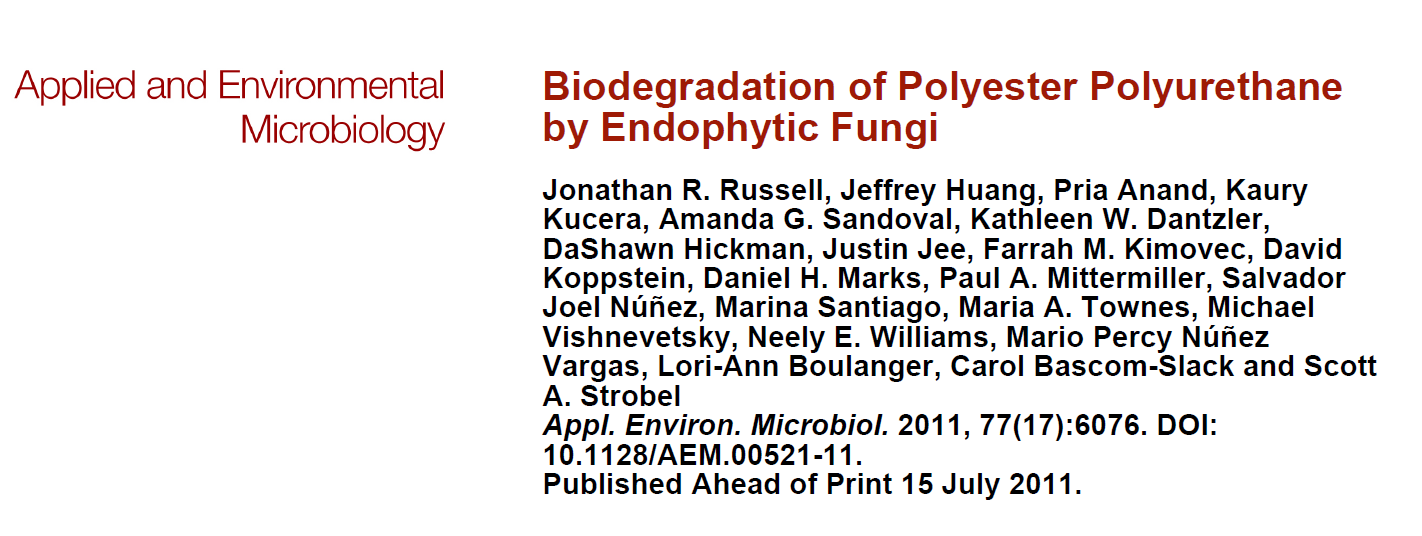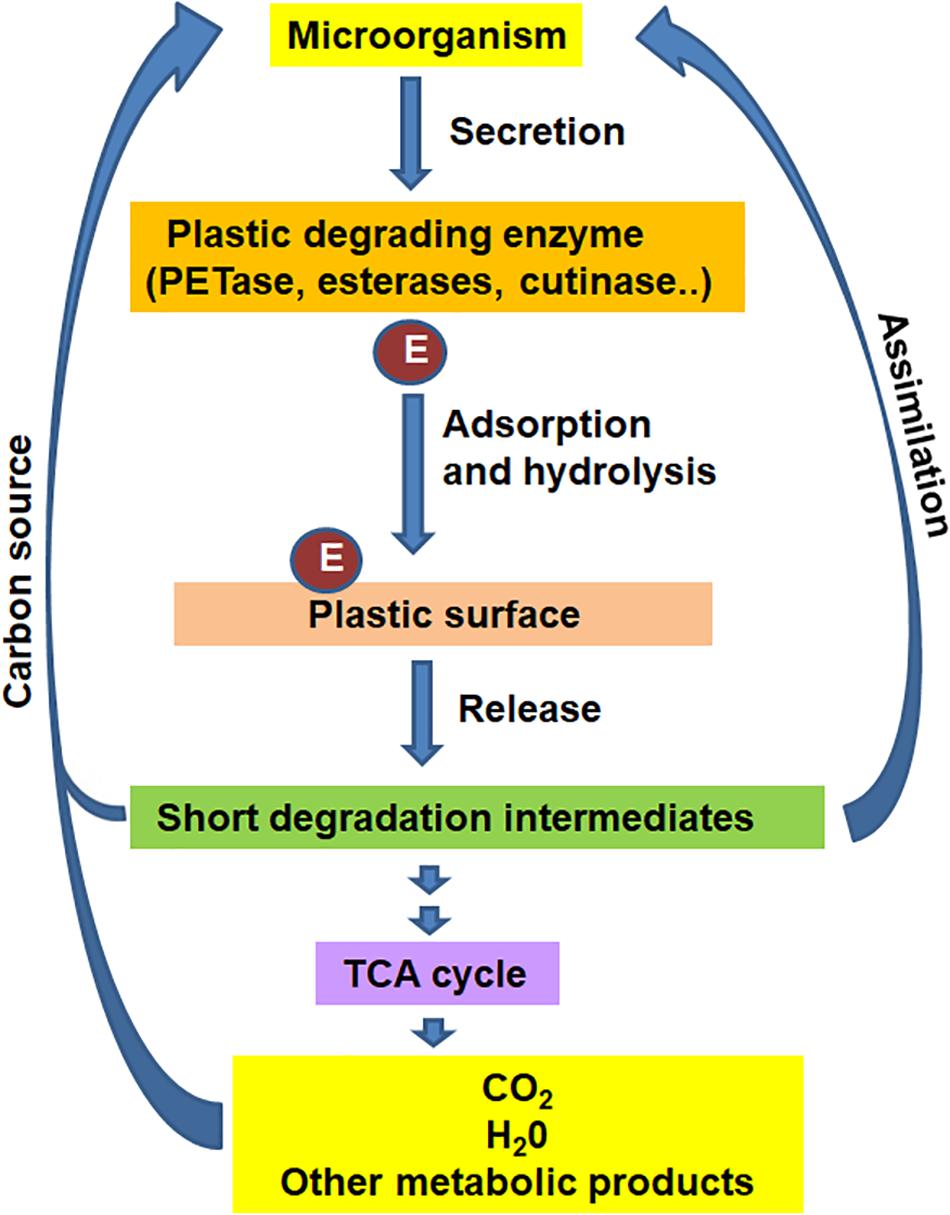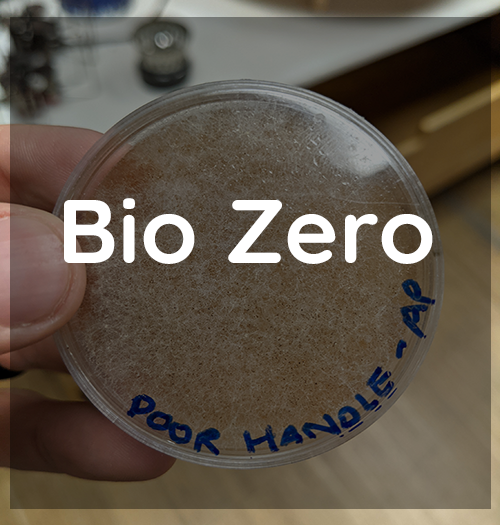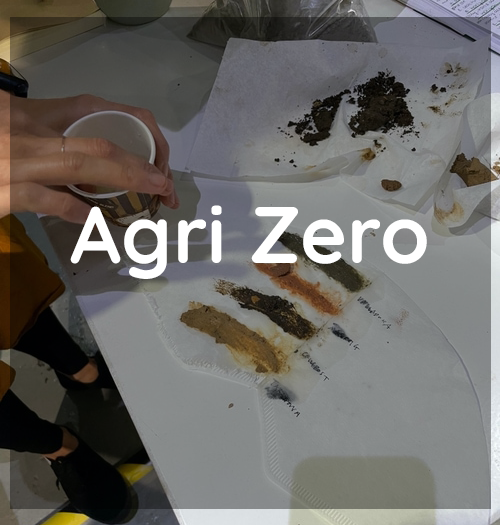
Summary of a paper
We have been tasked to write a summary of a scientific paper in order to develop a deeper understanding of the topic we are interested in and fostering a familiarity with the habit of reading scientific papers. I have chosen Biodegradation of Polyester Polyurethane by Endophytic Fungi as the study I would like to know more about, since I am planning on developing my final project around the topic of bioremediation and enzymatic recycling.
Conventional recycling is very limited and oftentimes inefficient. As it currently stands, it's only able to repurpose 2 of the 7 types of plastics (which can be processed a maximum of 3 times before their quality decreases to the point they're no longer usable). Bioremediation is an effective biological approach to breaking down a number of pollutants. It relies on the metabolic diversity of microbial organisms to break down components and turn them into organic compounds. This study isolated and screened 59 fungal endophytic organisms from the Ecuadorian Amazon for their ability to grow on and degrade Polyester Polyurethane (PUR) which is a plastic widely used in industry and manufacturing that is not able to be recycled using conventional recycling techniques but has been shown to be susceptible to bidegradation.
Endophytes are hyperdiverse microorganisms, incluiding fungi and bacteria that live within the inner tissue of the plant without causing overt disease symptoms. Endophytic fungi contribute to decomposition of lignocellulose polymers and are major contributors to the carbon cycle. The ability of these microorganisms to degrade a polymer as complex as lignocellulose would suggest that these organisms offer promise for their ability to degrade other complex polymers, such as those present in plastics.
Two distinct isolates of Pestalotiopsis Microspora were identified with the ability to efficiently degrade and utilise PUR as the sole carbon source when grown aerobically or anaerobically. An extract of the active culture suggest that serine hydrolase enzymes (esterases, lipases, and proteases and urases) are responsible for degradation of PUR by cleavage of the ester bond. The two isolates of Pestalotiopsis Microspora (E2712A and E3317B), were capable of reducing the optical density of the PUR dispersion by half in 5 days and complete degradation was achieved in 16 days with PUR as their sole source of carbon. In comparison, the other control organism capable of degrading PUR reached a halftime clearance within 15 days.
This work establishes that endophytes are a useful source of biodiversity with potential application for bioremediation from which one can further investigate into metabolic properties for more recalcitrant polymers.
Download files
Read the paper

Conceptually design an organism
This exercise consists of conceptually designing a mutant thinking of planetary well-being, playing with the organism's gene code utilising the language on iGem (International Genetic Engineering Machine).
Since we are already on the topic of bioremediation through degradation of plastic using endophytic fungi, why not pump them with microbial steroids so that not only can they degrade polyurethane faster, but also degrade every other type of plastic?
Petroleum-derived plastics have many desireable characteristics. They are lightweight, have very stable chemical and physical properties, and are very cheap to produce. They have become ubiquitous in our planet and are a real hazard to the survival of our enviroment due to their recalcitration to natural biodegradation processes. It is possible for these plastics to biodegrade in the natural environment, but they can take fom 50 to hundreds of years. Even with methods such as recycling, incineration, and calculated reduction of domestic plastics, the majority of plastics are left in the environment incluiding 95% in landfills and 5% in the oceans.
Fungi was chosen as they are highly diverse and they play a major role in decomposition of lignocellulose polymer and posses wider metabolic capabilities. In particular the genus Pestalotiopsis and the species microspora are highly effective in degrading Polyurethane (PUR), a plastic that cannot be recycled and can only be downcycled. The fungal isolate known as Aspergillus terreus strain MANGF1/WL has also been discovered to be an efficient polythene deteriorating species. These microorganisms produce enzymes that disintegrate polymers into monomers that are then used by the microbes as a carbon source. Thermoset polymers are easily attacked by microorganisms directly because of the potential hydrolytic cleavage of ester or urethane bonds in their structures.
In this experiment, we'll use molecular techniques to characterize plastic-degrading fungi and enhance enzymatic activity levels, and use omics-based technologies to accelerate plastic waste biodegradation processes. Biodegradation of plastics involves excretion of extracellular enzymes by the microorganism, attachment of enzyme to the surface of plastic, hydrolysis to short polymer intermediates, which are ultimately assimilated by microbial cells as carbon source to release CO2.
The enzymatic degradation occurs in two stages: adsorption of enzymes on the polymer surface, followed by hydro-peroxidation/hydrolysis of the bonds. The enzymes identified for their efficient involvmenet in Polymer degradation are serine hydrolases such as:
- Cutinases
- Esterases
- PETases
- Carboxylesterases
- Lipases
- Polyesterase
- First the process of Biofragmentation would occur in the potato dextrose agar (PDA) medium which involves hydrolysis and fragmentation of the polymer carbon chains and the release of intermediate products at 6x the original speed.
- Second is Bioassimilation, whereby small hydrocarbon fragments released by biofragmentation are taken-up and metabolized.
- Lastly there's the process of mineralisation, the transfer the hydrolysis products within the cell wall, intracellular conversion of hydrolysis products to microbial biomass with the associated release of carbon dioxide and water excreted out the cell.

